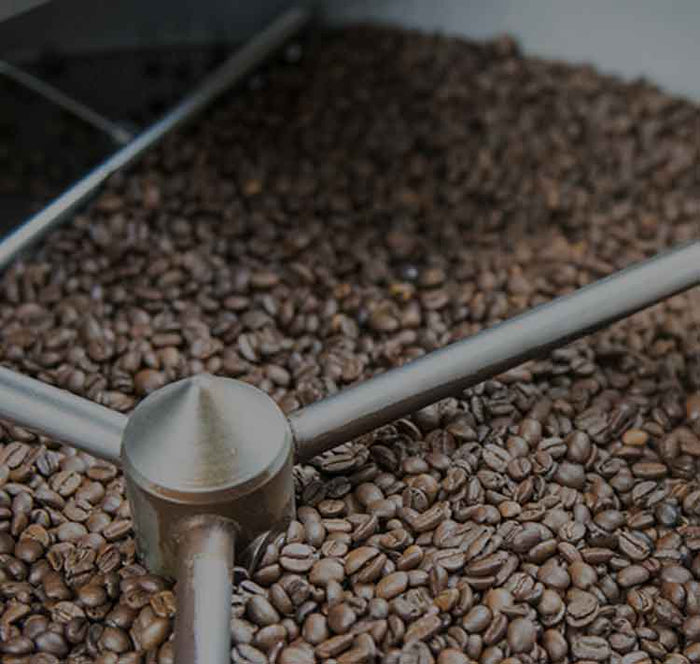
Posted on: AUG 13, 2017
Posted by: STOKES-COFFEE
Tags: Coffee Education Wholesale Coffee
As a big coffee lover I bet one thing you would love to know is how we develop flavours when we roast coffee and what actually happens during the roasting period. Well, in this blog we are going to take you through the coffee roasting process.
Green coffee beans
Did you know that before they are roasted, the coffee beans are actually green and have a grassy aroma? In fact, green coffee beans don’t smell like coffee at all. The coffee flavour develops when the beans are roasted, developing anywhere from 800 to 1,000 different aroma compounds.
Roast level
The roasting stage is where you transform coffee beans from green to brown. There are different ways and levels to the roasting that have a big impact on the flavour. Let’s take a look at what goes into the coffee roasting process.
Step 1: The bean loses moisture and shrinks in weight (the percentage will depend on the degree of roast).
Step 2: The bean physically expands.
Step 3: The bean will then turn from green to brown.
Step 4: It loses caffeine, as well as certain proteins and acids.
Step 5: The sugars are caramelised, which creates an oil on the surface of the bean.
Light roasts
The roast degree is extremely important, most roasters will want to decide the roast degree themselves. However, if you are new to coffee roasting then there are different types you can create.
Light roasts are usually more acidic and have a more distinctive taste compared to dark roasted coffee. If you like your coffee to taste fruity, then light roasts are the best pick for you as they are generally more fruity, due to their high amounts of an organic compound called 5-hydroxymethylfurfural.
Darker roasts
On the opposite side of the scale to light roasts, dark roasted coffee is more bitter and has roasty, burnt flavours. The reason you get this burnt taste is from when the amount of sulfuric compounds increase.
French roast
French roast coffee is dark roasted with a smoky sweetness and can sometimes have a charred taste, it is a popular type that many coffee drinkers prefer. During the roasting process, the temperature of the coffee bean can reach as high as 240 C, this is how it becomes dark roasted. When roasting French roast beans they make two cracking noises during the process:
- The first crack comes from the release of steam
- The second crack happens when the cell walls break down and release oils to the surface of the beans.
An interesting fact is that the longer a coffee bean is roasted, the more caffeine molecules are burned off, which means if you are looking to drink less caffeine, then French roast coffee is a perfect choice for you.
Coffee roaster
In 2009, the team here at Stokes Tea & Coffee switched our processing method to the Loring Smart Roaster, after we had roasted on our faithful old Whitmee for over 50 years. The Loring Smart Roaster uses 80% less natural gas as well as greatly reducing the amount of C02 emissions into the atmosphere. Using this process means that we are not only creating amazing coffee but we are also dramatically reducing our energy consumption and carbon footprint.
We hope the above has helped you to get a better understanding of the coffee roasting process. We have a huge range of coffee making equipment on our website, check it out here.
